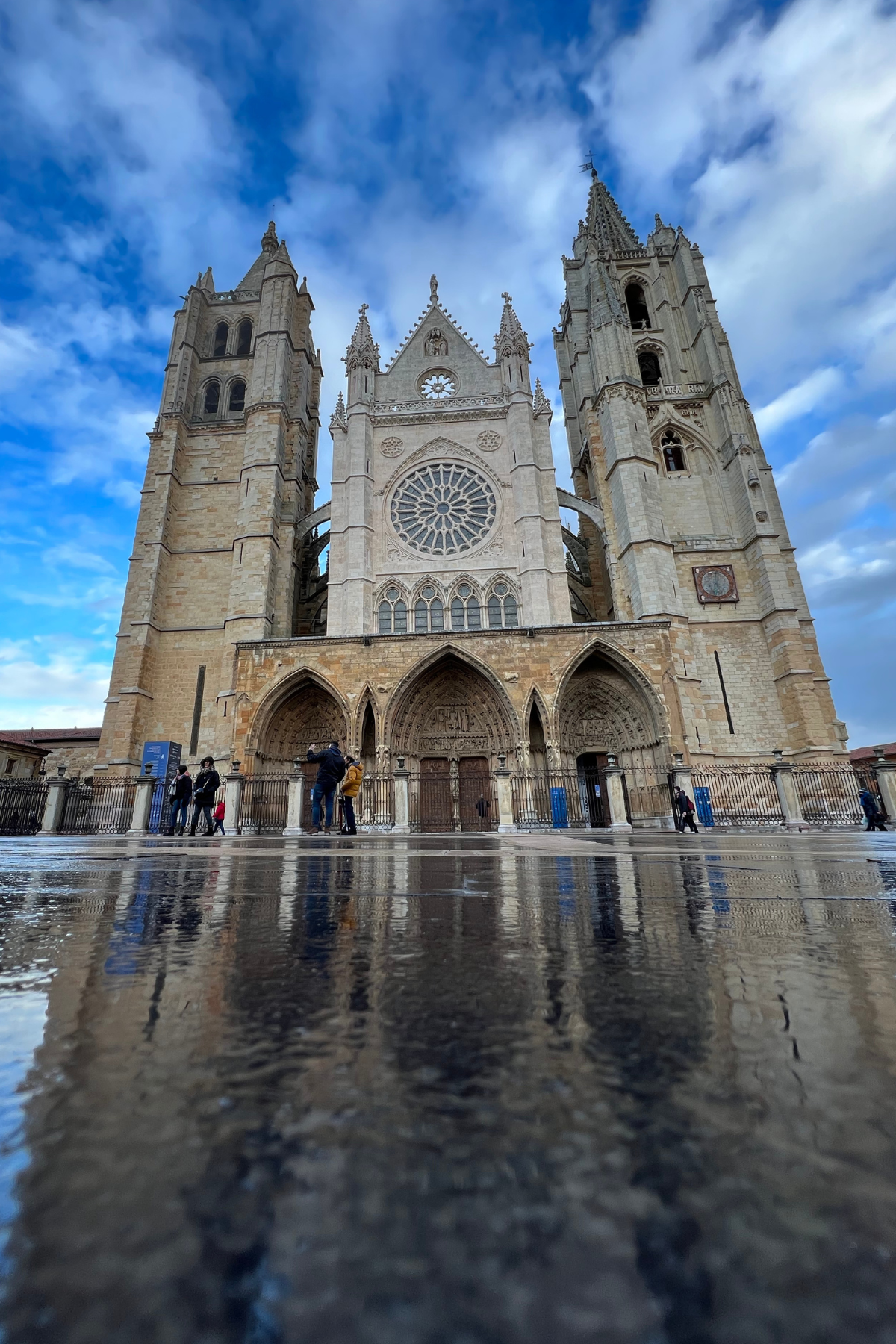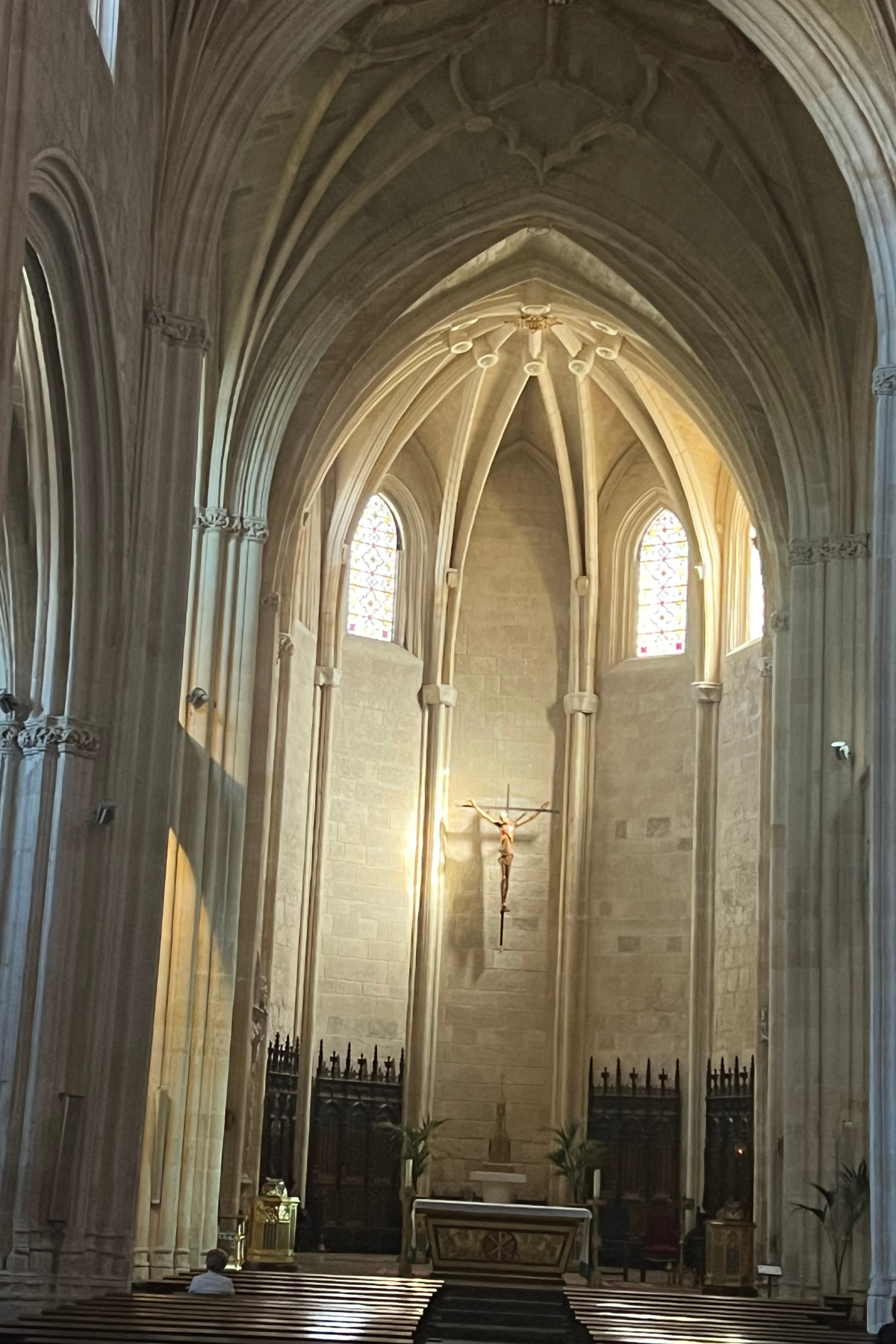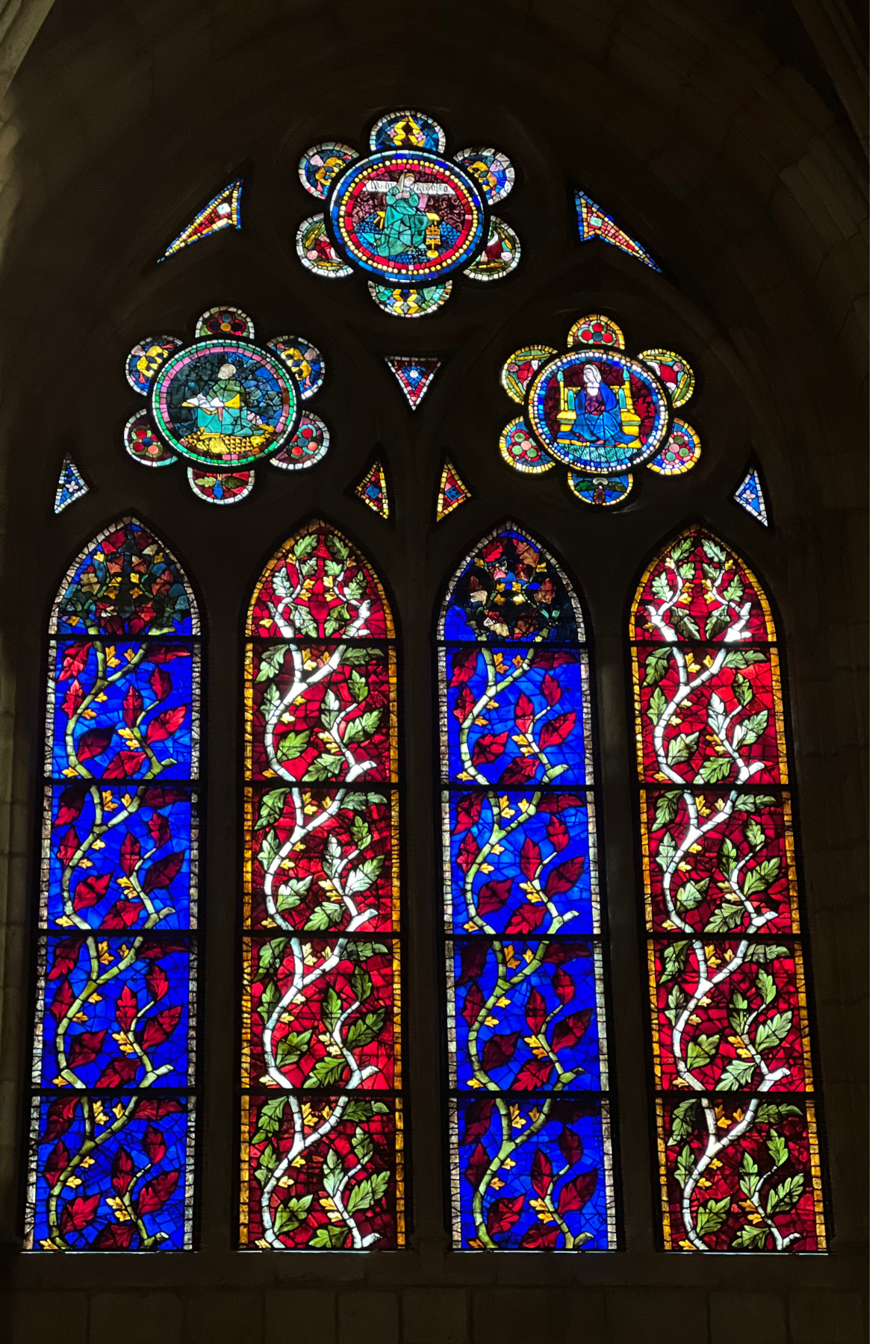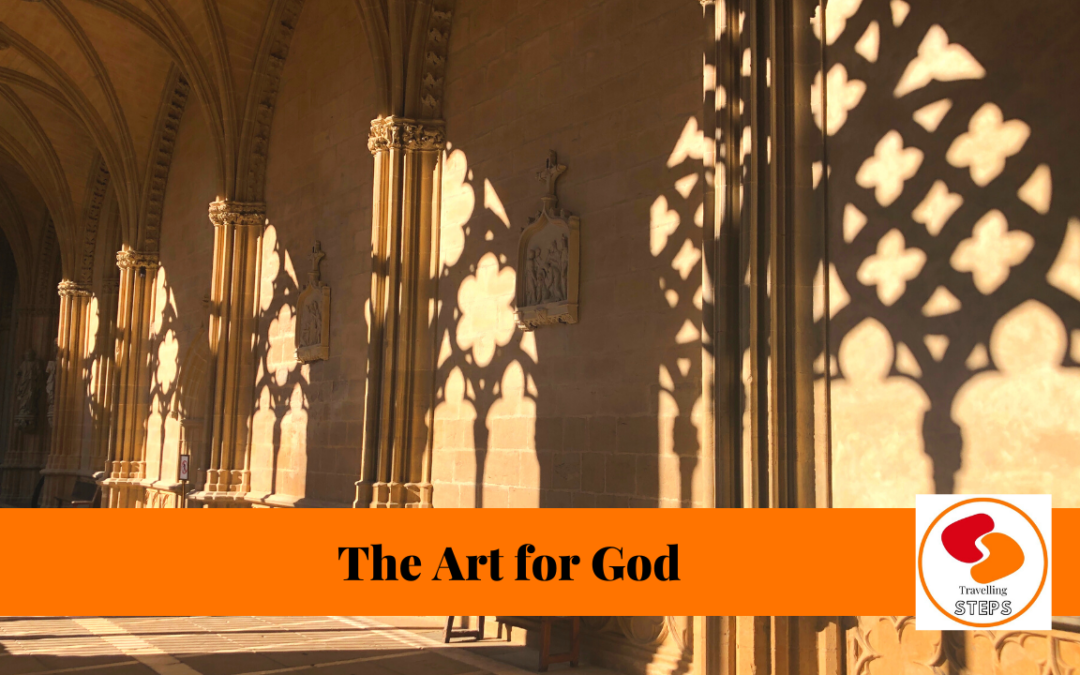Let me take you on a voyage through time and faith as I try to unravel the architectural tapestry that reflects humanity’s evolving perceptions of the divine.
From the introspective embrace of Romanesque art, where God resides within stone walls, to the Gothic grandeur, inviting the light of God to illuminate sacred spaces. Finally, we fall in love with the modernist mysticism of Antoni Gaudi, where God is not only found in nature but is nature itself.
Join on this spiritual odyssey through Spanish architecture, where each epoch tells a story of how we’ve sought, worshipped, and embraced the divine within the very structures that stand as testaments to our beliefs.
Romanesque Revelry:
In the intricate dance of architectural history, Romanesque art (XI to mid XIII centuries) emerges as a steadfast guardian of tranquility, standing in stark contrast to the vibrant Moorish art that once swept through the Iberian Peninsula.
Picture the scene: where Moorish art delights in excess, stimulating every sense with opulent patterns and intoxicating floral aromas, Romanesque art seeks a different path. It’s a journey towards calmness and introspection, a silent dialogue with the divine. As the Moors reveled in sensory indulgence, Romanesque churches and Cathedrals, with their solid stone walls and minimalistic adornments, whispered of a different spiritual connection—a quiet communion with the sacred that transcends the temporal.
Romanesque is a quiet moment for introspection. Look for God inside, not outside.
The absence of decoration on the heavy stone walls, the dim light coming from the small alabaster windows, and the simplicity of lines are so calming that invite us to meditate. If you top all of this with a subtle touch of incense and some mesmerizing Gregorian chants, of course you are going to find God.
Here in Spain, we can find this peace in small churches like Santa María de Eunate or in big Cathedrals like the one in Santiago of Compostela. If Eunate is a petite and delicate hermit that feels like a soft architectural breeze, the Cathedral in Santiago is a serene bastion for Christianity that empowers the presence of God.
Gothic Grandeur:
As we transition from the introspective Romanesque embrace to the soaring spires of Gothic grandeur (XIII to XVI centuries), a profound shift in architectural philosophy and God perception unfolds.
At this moment we don’t find God inside, and like Saint Tomas, we need to see to believe, and to see, we need light, the light of God.
Gothic architecture, with its pointed arches and towering cathedrals, represents an ascent towards the divine.
Unlike the Romanesque focus on introspection and calmness, Gothic structures invite the light of God to permeate both the sacred spaces and our souls. The cathedrals, reaching skyward with an almost celestial yearning, become conduits for spiritual elevation. It’s a vertical quest to connect with the divine, a deliberate departure from the contemplative ambiance of Romanesque spaces. The contrast between the two styles becomes a dialogue—a conversation between earthly reflection and celestial aspiration.
Here in Spain, the Cathedral in Burgos stands tall, as a testament to humanity’s unyielding aspiration to reach the divine heights. Its spires pierce the sky, a physical manifestation of the vertical quest to draw nearer to God. On the other hand, the Cathedral of Leon, exemplifies the notion of inviting the light of God to cascade within. The intricate stained-glass windows of Leon’s cathedral act as kaleidoscopic portals, transforming the temple into an ethereal canvas painted with divine illumination.
Here, the architectural poetry of Gothic design takes a different form, capturing the essence of spirituality through the interplay of light and shadow, an enchanting dance that connects mortal souls to the heavenly realms. Together, these cathedrals, Burgos and Leon, offer a profound narrative—a visual symphony—of humanity’s relentless pursuit to either ascend towards God’s abode or bask in the luminous embrace of the divine light.
Gaudi’s Whimsical World:
Now let´s enter the whimsical realm of Antoni Gaudi (1852 – 1926), where the Sagrada Familia stands as a testament to his reverence for the divine within nature. Gaudi, who was a very religious person, often dubbed a modernist mystic, believed that the purest form of creation lay in nature itself—a manifestation of God’s design. The Sagrada Familia becomes an homage to this belief, with its organic forms and a symbiotic relationship with the natural world.
Gaudi’s genius lies in his ability to seamlessly integrate the artificial with the natural, blurring the lines between human creation and divine inspiration. Within the Sagrada Familia’s ethereal spaces, I find not just a cathedral but a sanctuary that mirrors the sacredness of the natural world.
Gaudi’s masterpiece encourages us to seek God in the intricate patterns of leaves, the graceful curvature of branches, and the awe-inspiring beauty of the world around us. It’s an invitation to transcend the boundaries of conventional spirituality and discover the divine in every living, breathing facet of nature—a testament to the belief that, indeed, there is no better creation than God’s nature.
The Camino de Santiago: A Pilgrimage Through Time:
The Camino is not anymore, a Roman-Catholic pilgrimage, it is much bigger than one religion. Today, the Camino talks about spirituality, world´s spirituality. It touches us all no matter our religion, skin color, heritage, gender, it is a journey, the journey of life.
In the Camino you find the three elements I have written about. You find the austere Romanesque churches where you are invited to look inside of you and try to find the real you. Once you find yourself, and you enter a Gothic Cathedral you feel the warmth of the light touching you in your heart. And of course along the hikes you are in constant contact with nature and you have time to appreciate the beauty that surrounds us, the beauty that inspired Gaudi.
Now, let’s lace up our walking shoes and traverse the historic Camino de Santiago. Picture yourself strolling through picturesque landscapes, where each step is a pilgrimage through time.
Along this sacred route, the cathedrals become guideposts, guiding you towards the spiritual and architectural treasures that lie ahead.
Eager to experience this natural and architectural odyssey in person?
Join our exclusive tour of the Camino de Santiago in 2025, where we’ll unravel the secrets of Spanish architecture together. Unfortunately, the Sagrada Familia is not on the Camino, so we will not be able to admire it, but as we hike on the Camino, you will have time to have close conversation with nature.
This tour promises an immersive experience, blending history, art, and the joy of discovery.
Don’t just read about it; be a part of this living history. Pack your bags, bring your curiosity and hiking shoes, and join us on a journey through the architectural wonders that define Spain’s cultural legacy.
The Camino awaits, and with it, a once-in-a-lifetime adventure through the heart of Spanish architecture and soul.
¡Vamos!













